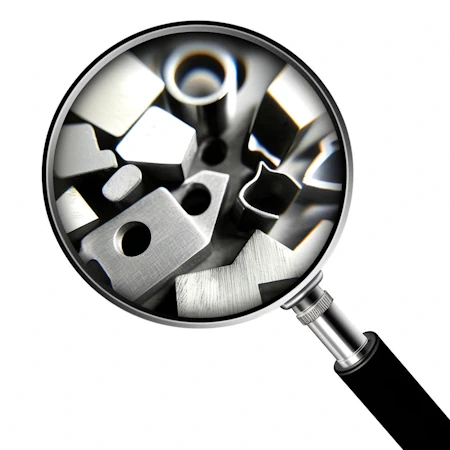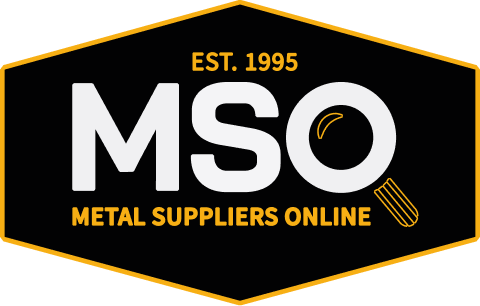Back To Browse
Titanium
Titanium 3Al-2.5V
Aging Procedure
Heat to 482-510 C (900-950 F), hold for 2-8 hours, air cool.
Annealing Procedure
Full anneal at 593-760 C(1100-1400 F) for 3 hours, air cool. For stress relief, heat to 316-649 C(600-1200 F) for 3 hours, air cool.
Applications
Principally used for tubing in aircraft and engine hydraulic systems, this alloy is also found in golf clubs, tennis rackets and performance bicycles.
Cold Workability
The cold work characteristics of this material is similar to that of a moderately tempered austenitic stainless steel. In multiple cold forming operations, intermediate stress relief is recommended to prevent tearing or other material damage. Post-work annealing is required to reattain optimum performance characteristics.
Forgeability
Rough work can be performed at 900 C (1650 F), while finishing operations should be performed at 843 C (1550 F).
Formability
May be hot or cold formed using hydropress, power brake, stretch or drop hammer methods. Similar in characteristics to 300 series stainless steels.
Heat Treatability
Solution Treating--heat to 871-927 C(1600-1700 F), hold for 15-20 minutes and water quench
Hot Workability
Hot forming will reduce both the springback and required forming forces, and will increase the overall ductility of the material.
Machinability
As a family, titanium and its alloys have developed a mystique as a nightmare to machine. This is simply not the case. Experienced operators have compared its characteristics to those found in 316 stainless steel. Recommended practice includes high coolant flow(to offset the material's low thermal conductivity), slow speeds and relatively high feed rates. Tooling should be tungsten carbide designations C1-C4 or cobalt type high speed tools.
Other Mechanical Properties
In the cold worked, stress relieved condition, 3-2.5 tube product can obtain tensile up to 125,000, yield up to 105,000 and elongation up to 15 %.
Other Physical Properties
Beta Transus (F +/-25) 1715
Principle Design Features
Key attributes of this alloy include 30-40 improved strength over Commercially pure grades and excellent corrosion resistance, formability and weldability. Commonly available from both distributors and mill sources. Beta Transus (F +/-25) 1715. In the cold worked, stress relieved condition, 3-2.5 tube product can obtain tensile up to 125,000, yield up to 105,000 and elongation up to 15 %.
Weldability
Rated as "good" in terms of weldability.
Known Forms
Bar-Hollow
Casting
Closed Die Forgings
Flanges
Flat Bar
Foil
Forgings-Discs
Hexagon Bar
Open Die Forgings
Pipe-Seamless
Pipe-Welded
Plate
Plate-Clad
Round Bar
Round Bar - Precision Ground
Seamless Rolled Rings
Sheet
Square Bar
Strip
Tube-Round (Seamless)
Tube-Round (Welded)
Wire Rod
Wire-Flat
Wire-Round
Wire-Shaped
Wire-Square
Wire-Welding
Billet
Coil
Contour Rings
Fittings
Forgings-Upset
Ingot
Mandrel Rings
Shafts
Shapes-Extruded
Shapes-HR
Valves
Welded Rings
Additional Data
Specifications
4943,4944,B265 (9),B337 (9),B338 (9),B348 (9),B381 (9),2241,B50TF117,T-9046,T-9047,1260,R56320Dismiss
Chemical Elements
| Aluminum | 2.5 - 3.5 |
| Carbon | 0.05 max |
| Hydrogen | 0.013 max |
| Iron | 0.3 max |
| Nitrogen | 0.02 max |
| Oxygen | 0.12 max |
| Titanium | Balance |
| Vanadium | 2 - 3 |
| Yitrium | 0.005 max |
Physical Properties
Density: 0.162lb/in³
Electrical Resistivity: 126µΩ·cm
Melting Point: 3100°F
Mechanical Properties
Modulus of Elasticity – Tension: 15MSI
Thermal Expansion
| Condition | Min | Max | Expansion Coefficient |
|---|---|---|---|
| Annealed | 32 °F | 212 °F | 5.3 µin/in/°F |
| Annealed | 32 °F | 600 °F | 5.5 µin/in/°F |
| Annealed | 32 °F | 1000 °F | 5.5 µin/in/°F |
Find the metal you're looking for today.

